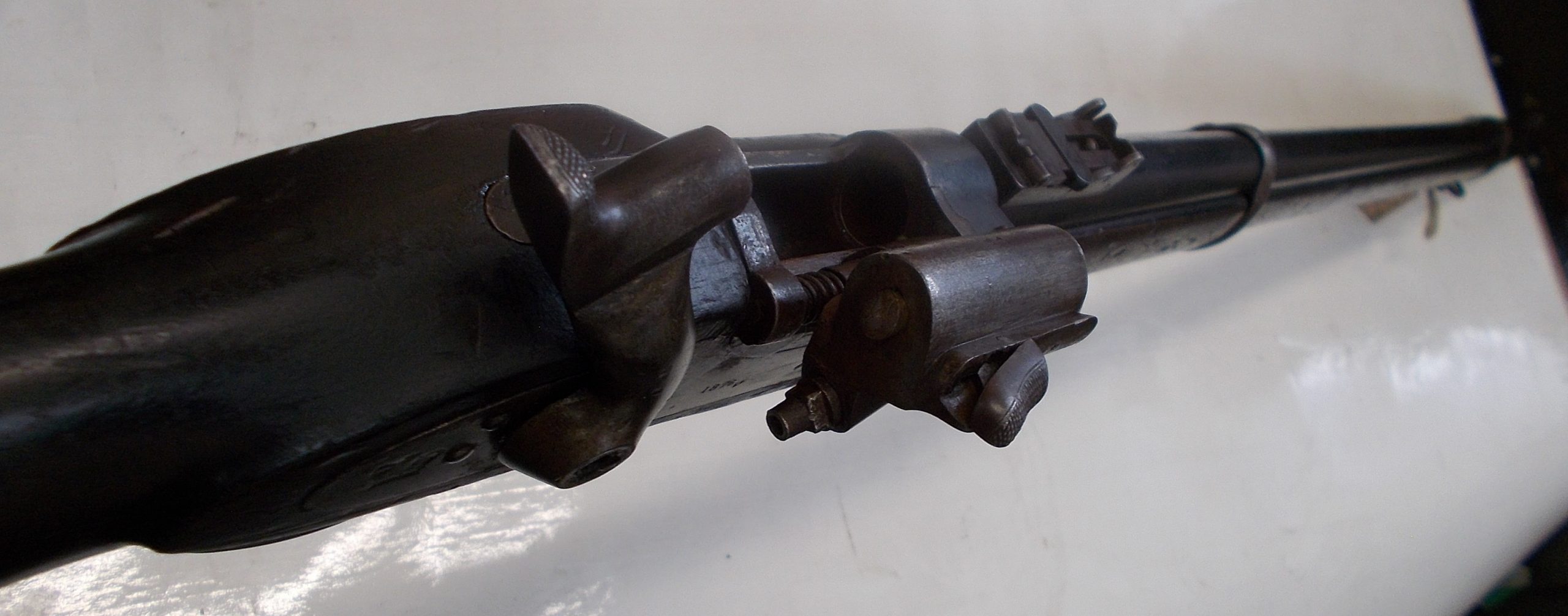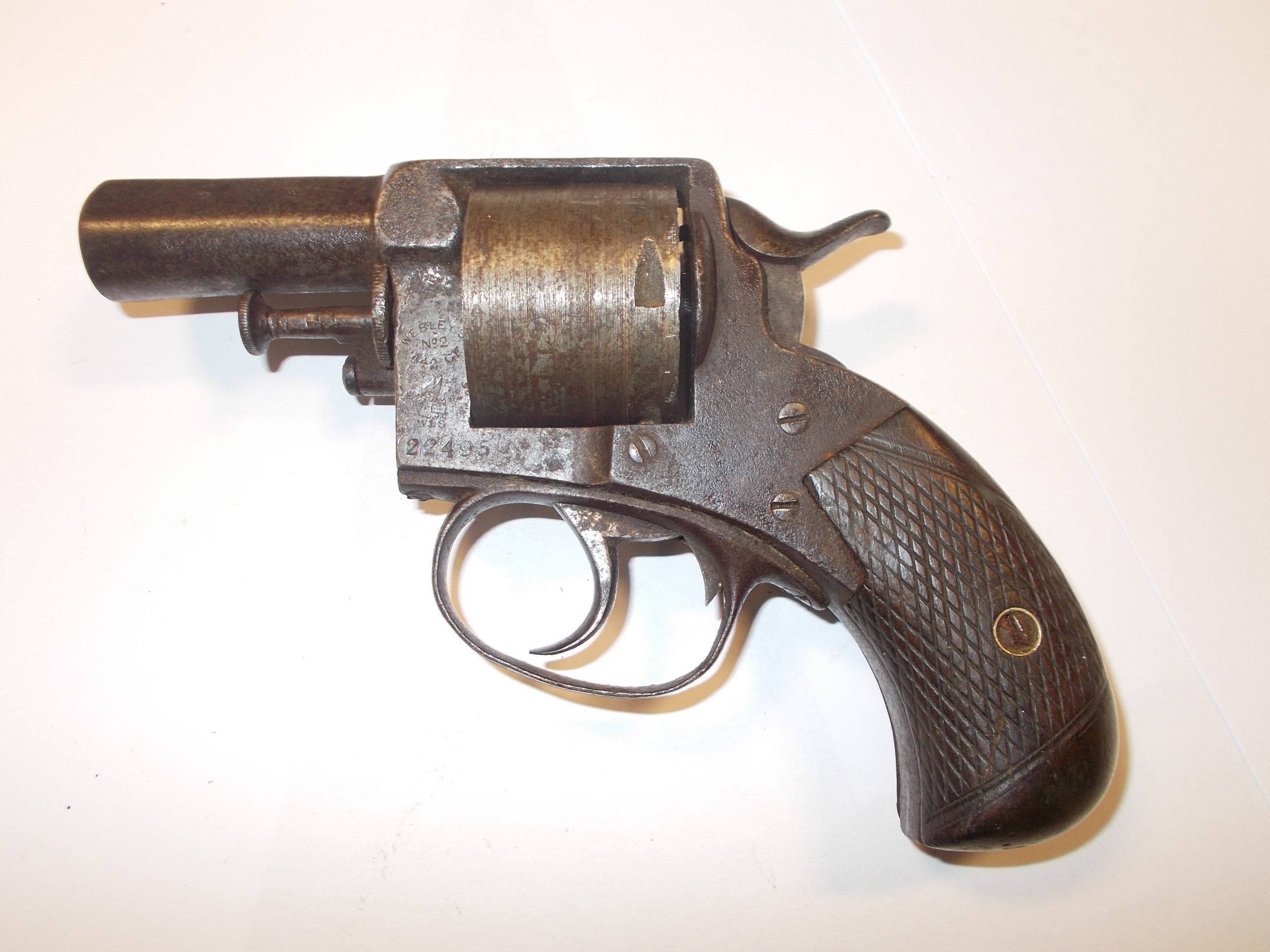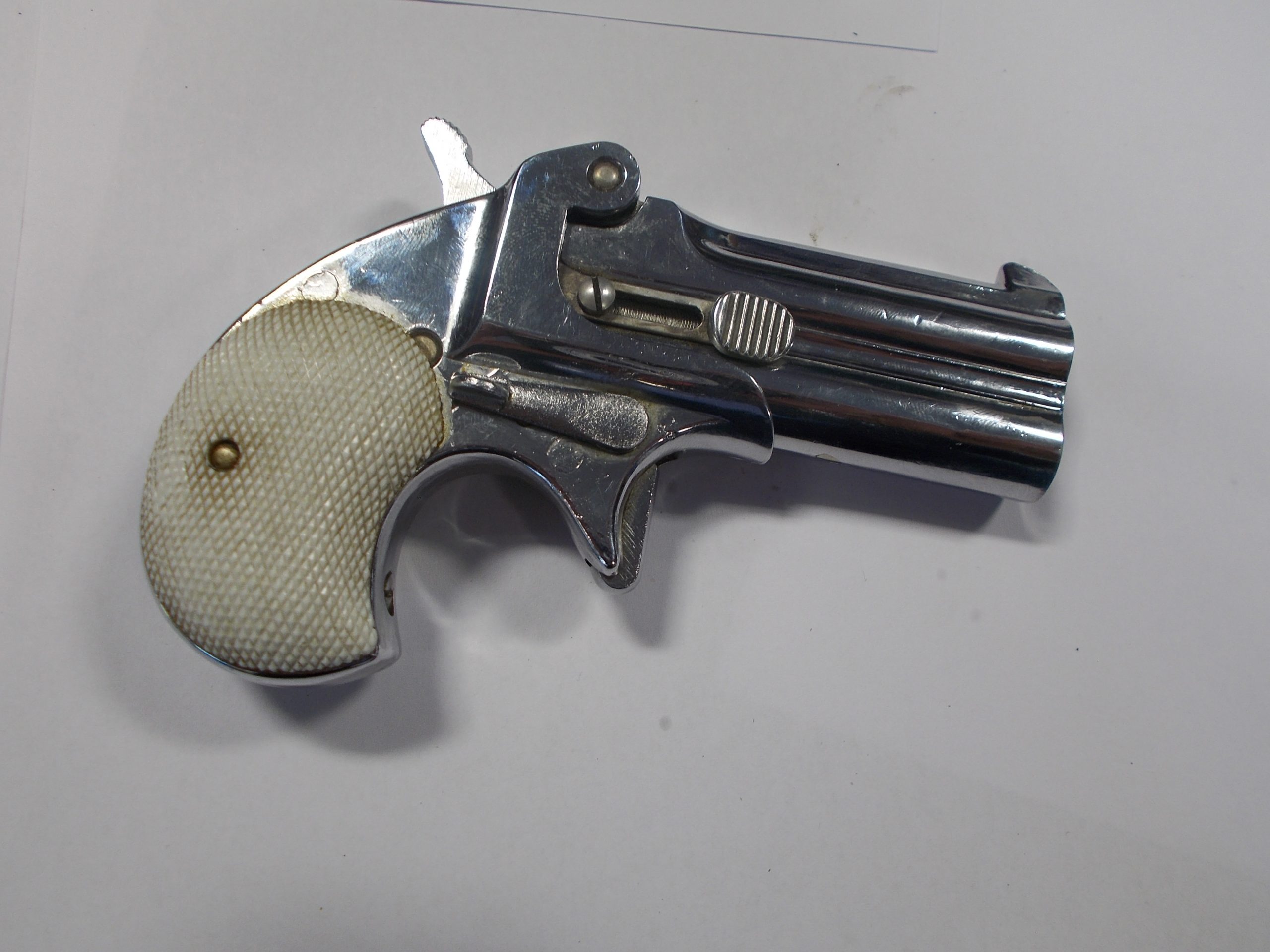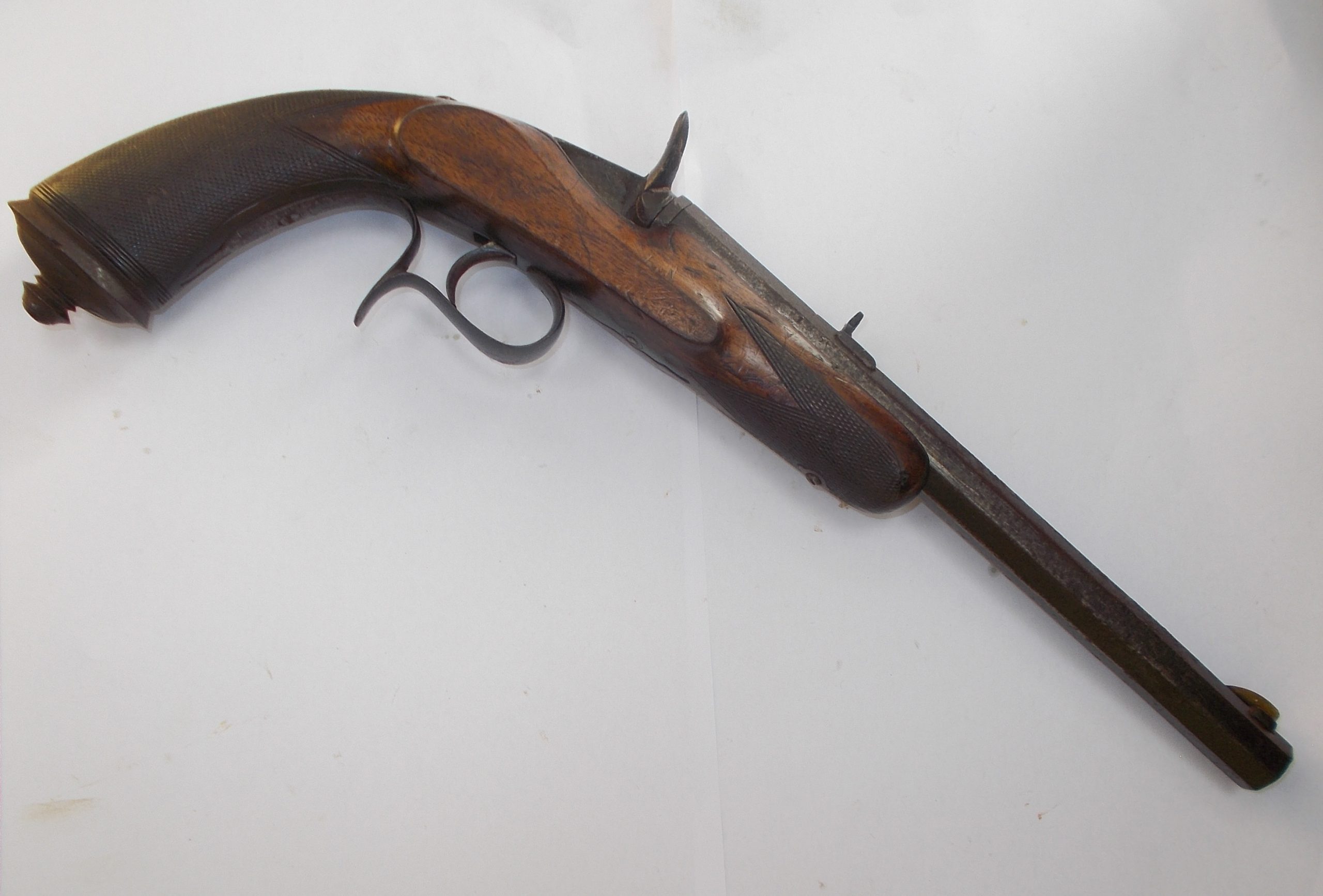Arming the Fenians
Published in Features, Issue 4 (July/August 2020), Volume 28The weaponry of the IRB in the 1880s.
BY ROBERT DELANEY

Above: A single American Sharp’s carbine was found at Brabazon Street. The ease with which it could be loaded, with an under-lever and falling-block action, made it popular with mounted troops and it was produced in huge numbers.

Above: A full-length view of a Snider rifle with the breech open. A favourite of the IRB, the weapon had been adopted by the British army during the 1860s as a replacement for its 1853 Enfield rifled musket.
In December 1881 a police raid on a property in Brabazon Street in Dublin uncovered a substantial cache of weapons and ammunition that were part of the Irish Republican Brotherhood’s (IRB) secret arsenal. Six months later, the police in London made an even larger seizure of Fenian weapons in Clerkenwell. Whilst these arms finds were substantial, they were not unusual; the authorities regularly found IRB arms. It had been nearly fifteen years since the failed Fenian rising in 1867, but the weapons found at Brabazon Street and in Clerkenwell seemed to prove that the IRB were preparing for another fight. It is possible to identify the type of weaponry that the IRB were amassing from contemporary newspaper reports. Their arms were procured from a number of sources, and police files from the time reveal something of the way in which they were obtained and distributed to members.
Snider rifles
Twenty-three rifles, two revolvers, a pair of pistols, sword bayonets, hand grenades and a great quantity of ammunition were seized at Brabazon Street and at an address on Cross-Kevin Street. Twenty-two of the rifles were Sniders, which had been adopted by the British army during the 1860s to replace its 1853 Enfield rifled musket. When the army decided to move from muzzle-loaded weapons to breech-loaders, Jacob Snider’s design offered it a relatively cheap solution by converting its stock of 1853 muzzle-loaders into more modern breech-loaders. Although the Snider had generally been replaced by the Martini Henry rifle in 1881, some of the Brabazon Street models had only been issued for service in 1876 and had originally belonged to one of the British army’s volunteer regiments. They had not been sold officially by the War Department and so must have been procured covertly by the IRB, perhaps by purchasing them from individual volunteers. There were two versions of the Snider in the cache; the long rifle described in newspaper reports was probably the original 1866 Pattern 1 Snider with a 39in. barrel, whilst the short rifle found was the 1867 P60 with a 30in. barrel. The barrels were interchangeable, and the rifle barrels and other parts that were found by the police during arms raids at this time suggest that the Fenians were stripping and reassembling their weapons. The armourer’s wrench found at Brabazon Street seems to confirm this. The ability to strip a weapon in this way made it easier to move arms around the city undetected.
Sniders were found at every major arms seizure made by the police during the period and they turned up in smaller numbers in the homes of IRB men. Weeks after the Brabazon Street find, 100 Sniders were found buried in Cork near the Dublin to Cork railway line, and the 400 Sniders seized at Clerkenwell in London in June 1882 suggest that they were a favourite of the IRB. These Clerkenwell rifles were in storage awaiting shipment to Ireland.
American Sharpe’s carbine
The Brabazon Street and Clerkenwell arms seizures turned up interesting examples of other rifle types from the Fenian arsenal. A single American Sharp’s carbine was found at Brabazon Street. First produced in 1848, this breech-loading carbine had been issued to British cavalry units that had been sent to India during the mutiny in 1857, and it had been used by cavalry on both sides of the American Civil War. The ease with which it could be loaded, with an under-lever and falling-block action, made it popular with mounted troops and it was produced in huge numbers.
The Clerkenwell arms seizure revealed that the IRB were also procuring American Warner carbines. Like the Snider, the Warner had a hinged breech block that swung to the side, parallel with the axis of the bore. Although this carbine had not been produced in great numbers, it too was used in the American Civil War and it also saw service during the Franco-Prussian war. Another American rifle purchased by the IRB that was uncovered during the investigation into the Clerkenwell find was the Remington. Although the Remington rifle had fared poorly during the trials carried out by the British army when it was looking for a breech-loader, it nevertheless saw service with armies all over the world.
Handguns

Above: An RIC Webley ‘British Bulldog’, a short-barrelled pocket revolver similar to the one used to assassinate US President Garfield in July 1881.

Above: ‘Saloon’ pistols like those designed by Henry Deringer were easy to conceal and were useful for personal defence. Saloon pistol ammunition was found at Clerkenwell.

Above: A single-shot target pistol similar to ones found at Brabazon Street.
The handguns used by the IRB are more difficult to identify and most newspaper reports only note that a ‘six-chambered revolver’ or a pistol had been seized, with no indication as to the make or model. Two six-chambered revolvers were found as part of the Brabazon Street cache, and unidentified revolvers and pistols were regularly taken from Fenians, but the Clerkenwell arms seizure sheds a bit of light on the matter. Twenty-five large boxes of revolvers were seized by the London police as part of that arms find and amongst them were a large number of .44 calibre Army Model Colts. This handgun had been used extensively by both sides during the American Civil War; although it had been replaced by the—easier to load—single-action 1873 Army Model, the presence of assembled Colt cartridges amongst the Clerkenwell arsenal suggests that the IRB were well prepared.
There is perhaps some irony in the fact that the other revolver commonly used by the Fenians was the Webley Royal Irish Constabulary Model. This weapon, originally selected as the weapon of choice for the Crown’s quasi-military police force in Ireland, was developed during the late 1860s, came in a range of calibres and was later used by police forces all over the world. Another Webley design in the Fenian arsenal was the British Bulldog, a short-barrelled pocket revolver. It was introduced in 1878 by the Birmingham gun-maker and came in .442 and .450 calibres. With a barrel that was just two and a half inches long, it was easily concealed in a pocket and had become infamous as the weapon used to assassinate US President Garfield just six months before the Brabazon Street arms were uncovered.
The Fenian arsenal also contained older models of handguns, like the pin-fire revolver found at the home of an IRB man in April 1882. Pin-firing weapons with their metallic cartridge case were quite advanced when they appeared earlier in the nineteenth century, but by the 1880s their use was in decline. Other weapons, like the pair of pistols found at Brabazon Street, are likely to have been single-shot, close-range weapons. Small pistols like those designed by Henry Deringer were easy to conceal and were useful for personal defence. The saloon pistol ammunition found at Clerkenwell suggests that the Fenians were using all sorts of pistols. Saloon pistols generally were small calibre weapons that were designed—or adapted—to fire in indoor shooting galleries, but they might prove useful to an individual who needed to fire a shot when escaping from the police.
Procurement
There was such an array of weaponry seized at caches like Brabazon Street and Clerkenwell that it is worth noting how it was procured. Thomas Walsh, a carpet-layer from Ireland described by the authorities as an ‘extreme nationalist’, was charged in connection with the Clerkenwell seizure. Although he did not have a licence to deal in firearms, he openly purchased rifles and revolvers from London arms dealers and stored them in temporary dumps awaiting shipment to Ireland. He packed them in old china cases that he bought second-hand or had packing cases made that were designed to take heavy weights. As a cover, he marked them ‘Fragile marble’. When renting the storerooms where he kept the weapons, he claimed that he was trading lacquered goods or goods from Birmingham, and on one occasion he said that he was exporting goods to India. In reality, crates of weapons were being shipped to random addresses in Ireland by rail and boat.
During the months that followed the Brabazon Street find the police learned about the system of procurement and distribution that was used by the IRB circle connected with that cache. One of the men arrested at the time of the seizure, Patrick Whelan, was identified as the treasurer of the group. He supplied money to Robert Woodward, who used his trade as a pianoforte-maker as a cover when he travelled between Ireland and Britain purchasing arms. Generally the weapons were brought to Dublin on board the London boats with the aid of a ‘trusted friend’ in the crew, and they were distributed in Dublin by Joe Poole and John Egan. Woodward sometimes smuggled revolvers into Dublin in his own luggage, and on more than one occasion he brought batteries from England to be used in the manufacture of explosive devices. The police believed that he also brought in Orsini bombs. These crude hand grenades had protruding pins full of mercury fulminate which caused them to explode on impact, and they had been used in various assassination attempts since Orsini’s attack on Napoleon III in 1858. The hand grenades found at Brabazon Street were probably Woodward’s Orsini bombs.
The weapons found at Brabazon Street were only a small part of the IRB’s arsenal. Individual Fenians probably had their own personal weapons hidden elsewhere. One estimate reckoned that there were 11,000 rifles and 15,000 revolvers in the country, and the massive seizure of arms at Clerkenwell gives some indication of the amount that was being shipped to Ireland at the time. One contemporary account claimed that Walsh and his colleagues in London—whom he refused to give up to the authorities—shipped 2,000 rifles and 35,000 rounds of ammunition to Ireland between 1879 and 1882. Developments within the arms industry moved at a fast pace at the time and finds like Brabazon Street and Clerkenwell let us see the mixture of old and not-so-old weapons in the Fenian armoury. It would be 35 years before another IRB-influenced rising would take place, but the caches of arms seized at the addresses in Dublin and London proved that the IRB of the 1880s were ready and waiting.
Robert Delaney is an armourer in the Irish Defence Forces and Curragh Military Museum.
















